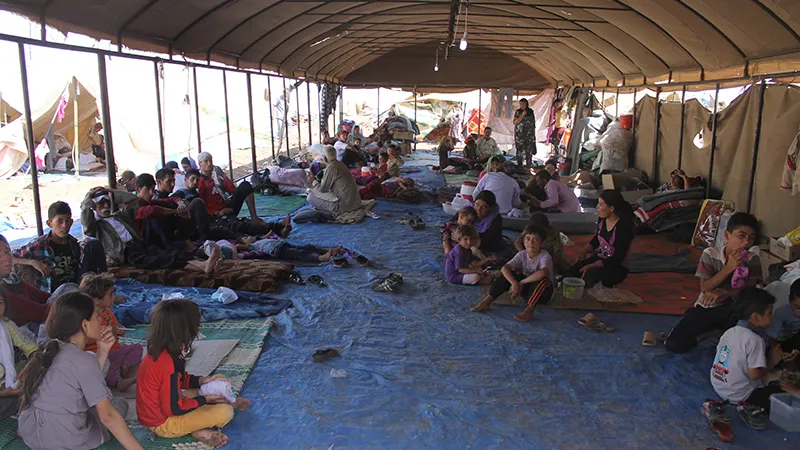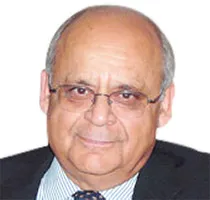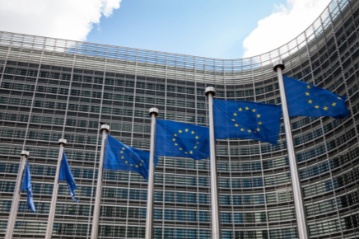The past week has been one of the most violent weeks of Ramzan in a long time: Pampore (June 25; 10 CRPF jawans, two terrorists killed); Kabul (June 25; 30 cadets killed in bomb explosion); Istanbul (July 1; 36 civilians killed in suicide attack); Dhaka (July 1-2; 28 killed in terror attack); Baghdad (July 3; 215 killed in two attacks). No European or other Western country has illuminated their cities in the colours of Iraq, Bangladesh, or Afghanistan. The war on terror has different priorities even in its symbolism.
Meanwhile, 11 persons, believed to be affiliates of the ISIS, were arrested in Hyderabad on June 29, aborting their plans to launch attacks in the city. We were lucky this time, in the famous words of the IRA who told Prime Minister Thatcher — “You have to be lucky all the time, we have to be lucky once.”
If, indeed, the plot was of the magnitude that has been alleged, one hopes that thorough investigations are completed quickly and lead to convictions in good time. Our record in this case, both in the realm of investigations, convictions and the entire judicial process that allows unacceptable delays, is far from satisfactory. There is also need to keep the entire issue in reasonable perspective and not let this go into hyperbolic overdrive. There are, however, a few issues that need clarification
First, the names of the two suspects — the Yazdani brothers. This is odd because Yazdani is the name of several villages in Central Iranian provinces like Isfahan and Shiraz and in Northern Iran on the Caspian coast. It is reasonable to presume that Yazdani is a Shia surname. But the ISIS is a rabid Sunni outfit, so how are these two connected with the ISIS, unless we have got the names wrong or the men were converted to Sunni Islam?
Second, mere correspondence on the Internet is not enough reason to conclude that such persons are ISIS affiliates. There is reason to suspect, but a conclusion to this effect is hasty. We must take into account that the ISIS is a brand name among some youth who are fascinated by the ideology and perhaps the barbaric tactics of the ISIS. It is like forming fan clubs because a terrorist organisation without brand equity will draw no attention. Also, the authorities would prefer to be seen unearthing major terrorist cells rather than of some obscure malcontents getting together.
So what we need to be looking for is whether there has been any physical contact among these persons and some ISIS representatives; or the motivation of an Arab terror outfit in reaching out to India to expand or escape pressures in Syria and Iraq. A better place would be in Islamic Pakistan and Afghanistan, or even Bangladesh, rather than the land of the infidels. We need to assess local support for the ISIS, source of funds, training, weapons and other material to these groups. Finally, whether or not there are other groups masquerading as the ISIS and recruiting Indians.
There is a reason why we should delve deeper into this. The one country that has begun to face criticism for indulging in jihadi activity in its neighbourhood is Pakistan. What better opportunity to organise groups that are faithful to Pakistan, like the Haqqani Network and Lashkar-e-Taiba, into ISIS groups and let them loose in target countries. Terrorism will continue, yet Pakistan will get no blame. Any intelligence organisation could plan false flag operations like this.
Fifteen years ago, after the Al-Qaeda attacks in the US, there was hysteria in India about Al-Qaeda hordes infiltrating into India. Ultimately, the Al-Qaeda made no headway in India. It is possible that by highlighting the ISIS without adequate evidence and more on the basis of suspicion, we are repeating this today with regard to the ISIS.
Last May, the ISIS had put out a video of a handful of its cadre from ‘Hind wal Sindh’ (India and Pakistan) in a boat. That is all the number of Indians who might have joined, or forced to join the ISIS — maybe 23 or 30 or even a hundred from a population of 185 million Muslims in India. The fears of many, including Indians, never materialised.
But, we do not live in isolation and cannot afford to be complacent. In Bangladesh, the ISIS has claimed credit in its news agency Amaq for the terrorist strike at the upscale restaurant in Dhaka (12th attack since September 2015). Those able to recite from the Koran could escape. This is about as Islamic as one could get. Meanwhile, in Karachi, terrorists were collecting donations outside the Gulshan-e-Iqbal mosque for jihad against India.
There are conscious efforts in India, including in Mumbai and Hyderabad, to spread the jihadist ideology. Inflammatory speeches and videos and violence against other sects are the usual ploys. There is little difference between Barelvi groups like the Raza academy and the ISIS on theological principles such as blasphemy, apostasy and Shia Muslims. Allegations of religious persecution and discrimination are favourite weapons of politicians trying to find political space for themselves. This may be explained away as the rantings of individuals, but this is lazy logic.
The greater danger that India faces is the silent radicalisation with a steady growth in the number of Salafist mosques and madrasas. These are funded illegally from abroad and tolerated, even encouraged, by state governments and the Centre. These institutions propagate Islamist supremacist ideologies that would ultimately lead to conflict. The authorities have to make concerted efforts to counter this urgently.
The response in the West has been the use of drones and collecting metadata to try to understand and tackle radicalisation by looking for evidence about the role of madrasas and mosques, or the Internet. The most vital source of indoctrination is missed out. Most religious indoctrination happens in homes where the uneducated woman in a misogynist patriarchal society interacts with her children who have no access to education and quickly imbibe obscurantist beliefs. And when at the age of 7-8 or more, they go to the local madrasa, their minds have already been filled with such beliefs. Extremist religious leaders see an educated child, especially a girl or a liberated woman, as the biggest threat to their domination in the long run. Malala Yousafzai was one such threat.
Therefore, this nexus of mullah-uneducated woman, dominated by patriarchal beliefs, has to be broken and replaced by modern education to attain victory in the long run.
This commentary originally appeared in The Tribune.
The views expressed above belong to the author(s). ORF research and analyses now available on Telegram! Click here to access our curated content — blogs, longforms and interviews.




 PREV
PREV



